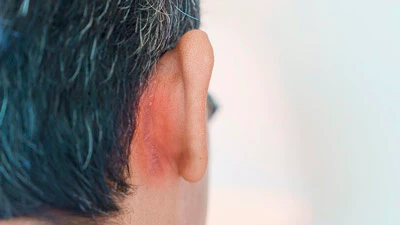Without a doubt, monsoon is a refreshing time for us, but it also ushers in a host of health challenges, particularly fungal infections.
The increased humidity during the rainy season creates a favourable environment for fungi to thrive, leading to various skin and nail issues. While these infections can be bothersome, the good news is that several simple and effective home remedies can help combat them.
Fungal Infections During Monsoon
The monsoon season sets the stage for fungal infections due to the warm and damp conditions that fungi love. Some of the most prevalent fungal infections during this time include:
Athlete’s Foot
This fungal infection affects the skin between the toes, causing redness, itching, and sometimes even blisters. It commonly occurs in people who wear closed footwear for extended periods, as the moisture becomes trapped, providing an ideal breeding ground for fungi.
Ringworm
Despite its name, ringworm is not caused by worms but by fungus. It manifests as a circular, red rash with a clearer centre, resembling a ring. It can occur on various parts of the body, including the scalp, feet, and groin, and spreads through direct contact with an infected person or pet.
:6 Amazing Monsoon Skin Care Tips
Nail Infections
Fungal nail infections can make nails thick, discoloured, and brittle. They usually develop when fungi enter the skin through small cuts around the nail or through the space between the nail and nail bed.
Easy Home Remedies to Cure Monsoon Fungal Infections
Apple Cider Vinegar Soak
Apple cider vinegar is a popular remedy for various skin issues, including fungal infections. The antifungal properties of apple cider vinegar have been demonstrated against Candida spp., making it a potential therapeutic option for patients suffering from denture stomatitis, as per a study published in the Journal of Prosthodontics.
Combine equal amounts of apple cider vinegar and warm water in a basin or tub. Soak the affected area, whether it’s your feet, hands, or any other body part, in the solution for about 20-30 minutes daily.
Pat the area dry thoroughly afterwards. The vinegar’s acidity will create an unfavourable environment for the fungus to thrive, helping you get relief from itching and inflammation.
Tea Tree Oil
According to a study published in the International Journal of Molecular Sciences, tea tree oil could serve as a beneficial complement to conventional antifungal medications due to its antifungal and anti-inflammatory activity.
This essential oil can effectively treat fungal skin infections. However, it’s essential to dilute tea tree oil with carrier oil like coconut oil or olive oil before applying it to the affected area.
Garlic Paste
In a study published in the journal Cureus, garlic has shown apparent anti-fungal activity, with the power to halt the growth and spread of pathogens that cause fungal infections.
Create a paste by crushing a few garlic cloves and applying it directly to the affected area. Allow the paste to sit for 30 minutes before rinsing it off. Rinse it off thoroughly with water afterwards. Garlic may cause a slight burning sensation, but it’s normal.
Yoghurt
Yoghurt contains probiotics, which are beneficial bacteria that can help restore the balance of your skin’s microbiome, reducing the growth of harmful fungi. Additionally, yoghurt has lactic acid, which can aid in exfoliating the skin and eliminating dead cells.
Neem Leaves
Neem, or Indian lilac, has excellent antifungal properties and has been used for centuries in traditional medicine to treat various skin conditions, including fungal infections. Boil a handful of neem leaves in water, strain the solution, and let it cool. Use neem-infused water to wash the affected area daily. This will not only relieve itching and inflammation but also speed up the healing process.
Turmeric Paste
Turmeric is a natural antiseptic with strong antifungal properties. The curcumin compound in turmeric will help eliminate the fungus and reduce inflammation.
You can make a paste by mixing turmeric powder with water or coconut oil. Apply the paste to the affected area and let it dry for about 20 minutes before rinsing it off.
Conclusion
Fungal infections during the monsoon can be uncomfortable and distressing, but with these easy home remedies, you can effectively combat them. If the infection persists or worsens, it is essential to consult a healthcare professional for appropriate diagnosis and treatment.
[Disclaimer: This article is for informational purposes only. Consult your healthcare provider to get a thorough diagnosis and treatment as per your health needs.]Source: Only My Health










